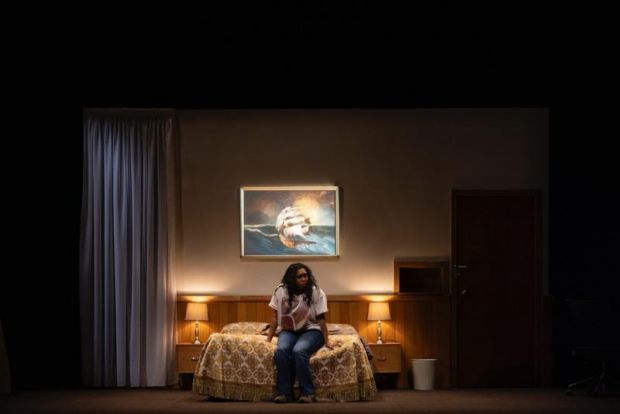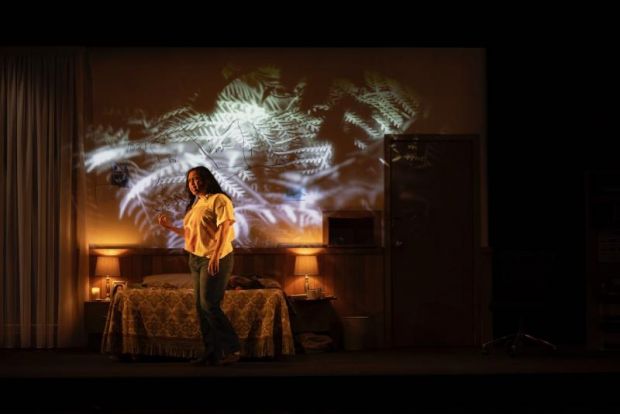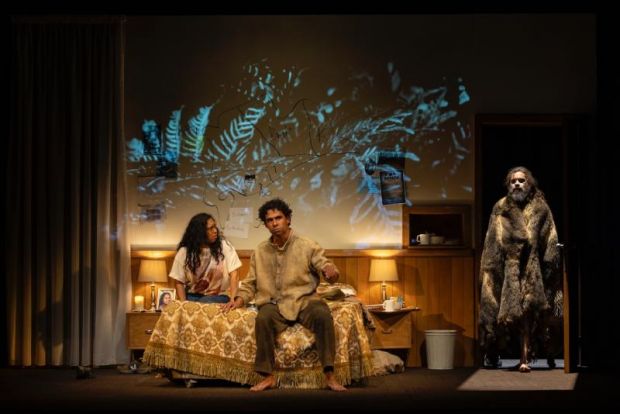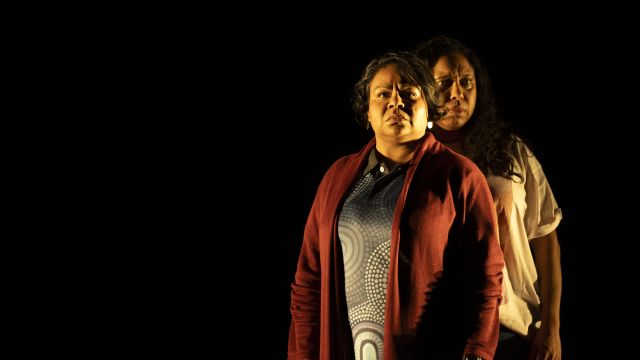The Black Woman of Gippsland
The Black Woman of Gippsland, written and directed by Andrea James (Sunshine Super Girl) is a brilliant dramatization of historical events seen through the eyes of a budding black historian.
A white woman survived a shipwreck off the Gunaikurnai Coast in the 1840s; a childhood story heard around the kitchen table, told by a female elder, haunts Jacinta (Chenoa Deemal), now a PHD graduate who lives in a caravan in the backyard at her Aunty Rochelle’s (Ursula Yorich). Jacinta is heart-set on re-evaluating the colonial archives to explore this ‘white woman’ legend and how it coincides with the many bloody massacres of her people. Her white supervisor (Ian Bliss) is not convinced. He argues that there is a lack of documentation, hence her thesis will be lacking analyses and not validated as historical research.

The main narrative is seamlessly interspersed with hypnotic performances by cast members and ensemble performers - a mix of First Nations and settler artists. Indigenous Choreographer /Performer Brent Watkins designed and orchestrated a landscape of Dreamtime and ritual practises while songs revised into indigenous language from colonial records (Alfred Howitt in 1904) together celebrate a fusion of cultures and reflect on modern reconciliation with First Nation people.
Jacinta tells her young sporty cousin Kyle (Zach Blampied) she is on the verge of being a “Blackademic”, as she attempts to reason with him as to why she can’t spare time with family. As tension rises on the home front, she decides to secretly pack up and set up office in the nearby motel.
Aunt Rochelle, riddled with fear for her niece’s safety, especially after losing her sister (Jacinta’s mother) to death in custody, reports her missing at the local police station. When the police officer (Ian Bliss) claims “she is on walkabout”, Peppers (Aunty Rochelle’s high school nickname) is angry and confused by his bigoted attitude - despite their ‘friendly’ old school ties.

Brent Watkins’ indigenous man in possum cloak signifies strong cultural values and connection with ancestral land; he appearing stoic and wise, and suggests he might know the elusive truth of the White Woman - rumoured to have lived in a cave with an Aboriginal tribe.
White Woman may be a figment of one’s imagination; she was seen somewhere from afar, rumoured to be a bedraggled woman in white who was raped and thrown overboard. But she is alive and well in an Aboriginal legend - after white settlers - their land and lore evolved, and they stayed true to their Dreamtime.
Jacinta in her hotel room, caught up in her own dreamtime, maps out events on the wall above her bedhead. She is determined to make sense of this melting pot of facts, figures and significant geographic sites.

The culmination of Jacinta’s thoughts transforms the stage into a soul-stirring magical realist atmosphere via audio/visuals by Rhian Hinkley, with hypnotic and powerful sound design (James Henry) and lighting design (Verity Hampson) enhancing the visceral experience for the audience.
The point of no return in this narrative sees a culmination of events that catapults a change in our understanding of Australian History, through the eyes of a young gun.
Together with the convincing and heart wrenching performances by the entire cast and ensemble performers, this unique and distinctive blend of theatre remains true to its inspirations and sources. Andrea James has penned a masterful piece of theatre that will resonate for generations to come.
The ongoing atrocities faced by the Indigenous people of this land suggest that history can replicate.
Flora Georgiou
Photographer: Pia Johnson
Subscribe to our E-Newsletter, buy our latest print edition or find a Performing Arts book at Book Nook.

